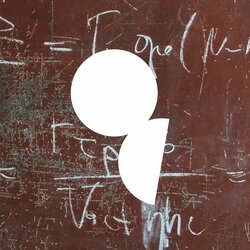How does the falsifiability criterion work in LGBTQIAPP+research?
How do scientists know that the subject of their research doesn't troll them?How scientifically justified is the addition of letters to this abbreviation, and is it possible to distinguish a real orientation from a fictional one? Is there a way to prove that a person who calls himself pansexual is not pansexual, or is it enough to come up with a new word to describe any phenomenon, and only the desire of someone to be called pansexual is already enough for classification?If tomorrow someone says that stools excite them and calls themselves a taburetkosexual, will the letter T be added to the abbreviation?

I definitely understand that you, Anna, are trolling me right now, because as a psychologist with an education, you should know two things better than I do:
Whether we like it or not, the sexual and gender methodology does not stand still.
Take the same Kinsey scale.
Or the word “transgender”, which simply didn't exist some time ago.
And even earlier, they didn't know about your genders, people lived for themselves somehow.
The question, in fact, is subjectivity. In the case of sexuality, we are talking about attraction to able-bodied persons of a certain gender who have reached the age of sexual consent. “Taburetkosexuals” and other verbiage are usually written by trolls and / or regulars of anti-femme communities (which are a coincidence! – they often turn out to be mossy conservatives in the broad sense).
The LGBTQ+environment has its own excesses, however, but mostly it emphasizes that it concerns only adults and mentally healthy people who can give feedback about sexual attraction to them. And provocateurs and dubious “innovators” will probably face serious skepticism from activists about the inclusion of a new group.
Let's break the abbreviation into molecules:
Лесбиянки Lesbians (gay women). Everything is clear
Ге Gays (homosexual men). Everything is also clear.
Бис Bisexuals.
⬛ Transgender people. Those who are uncomfortable in their biological body and would like to change their gender. Nature and the universe make mistakes. Within the static margin of error on the general background, but we are talking about specific people, no matter how many there are, 0.1 or 1%. Transgender correction, that is, direct intervention in the body, does not just happen, but requires a medical report on permanent gender dysphoria, and involves hormone therapy, and then, possibly, sex reassignment surgery, up to vaginal / phalloplasty and implants.
Кв Queer people. Those who do not want to identify themselves strictly as a man or as a woman. Something close to the word “genderfluid”. Obviously a minority.
⬛ Intersex people. People with an incomplete set of primary sexual characteristics characteristic of individuals of their own sex, or with a combined set. Quote:
Read about them:
⬛ Asexuals. People without explicit sexual attraction to someone and those who, for various reasons, do not want to have sex and have public heterosexual partners. Asexuals can even live with another person, but avoid intimate contact.
In the conditions of utter heterosexuality and hypersexualization around, on what (the cult of sex) mass and everyday culture is built, in which a person's gender identity is confirmed through its demand for persons of the other sex, and the opposite (unpopularity) is stigmatized in the most rude way (nerd, bobyl, loser, scaremonger, mymra, old maid), it is difficult for asexuals in their own way.
⬛ Polyamores. Adherents of non-monogamous (open/free) relationships with several people at the same time. From guest marriages and “Swedish family” (three-way cohabitation) to sex communes and various experiments. Again, the same bisexuality does not imply polyamory and promiscuity. A person can have a homosexual partner in a current relationship, but in a previous relationship be with a person of the other sex, in any case remaining monogamous bisexual.
П Pan- / polysexuals. If a person likes transgender people, then they can no longer be called bisexual.
⬛ + is used to indicate other discriminated / investigated groups.
Personally, none of the above threatens my heterosexuality.
They are investigated because they are fighting for their rights (freedoms and opportunities), speaking about themselves in one way or another in the public space. They sometimes have much more moral and legal restrictions than heterosexuals. From the fight against same-sex unions and homophobia – to invisibility in the medical sense and crippling medical practices in relation to them.
However, there are only two genders. Agenders, bigenders and all sorts of demigrees-posturing, mockery of common sense and complete discredit of gender theory, because they directly contradict it. The essence of gender is also to treat all people equally and respect their personal boundaries, no matter who is in front of you. For those who don't fit into the matrix, the word “queer” is more than enough.